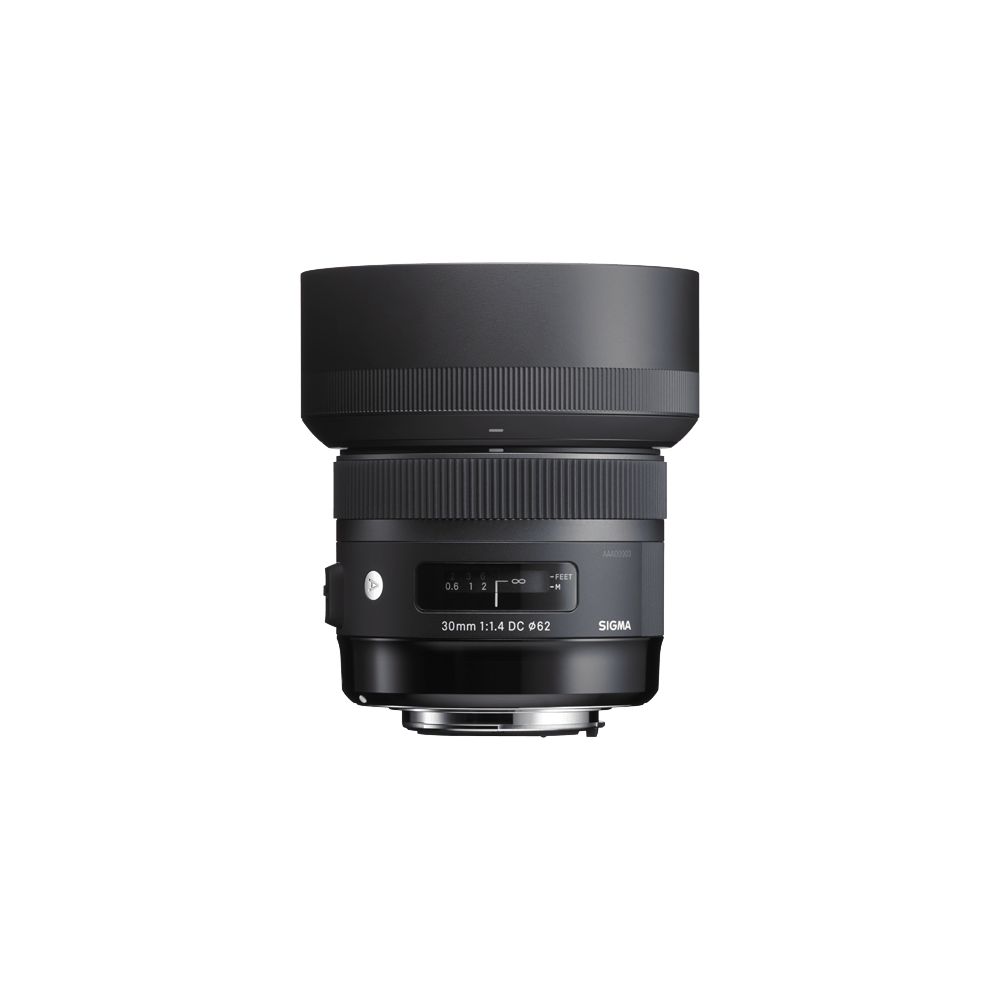
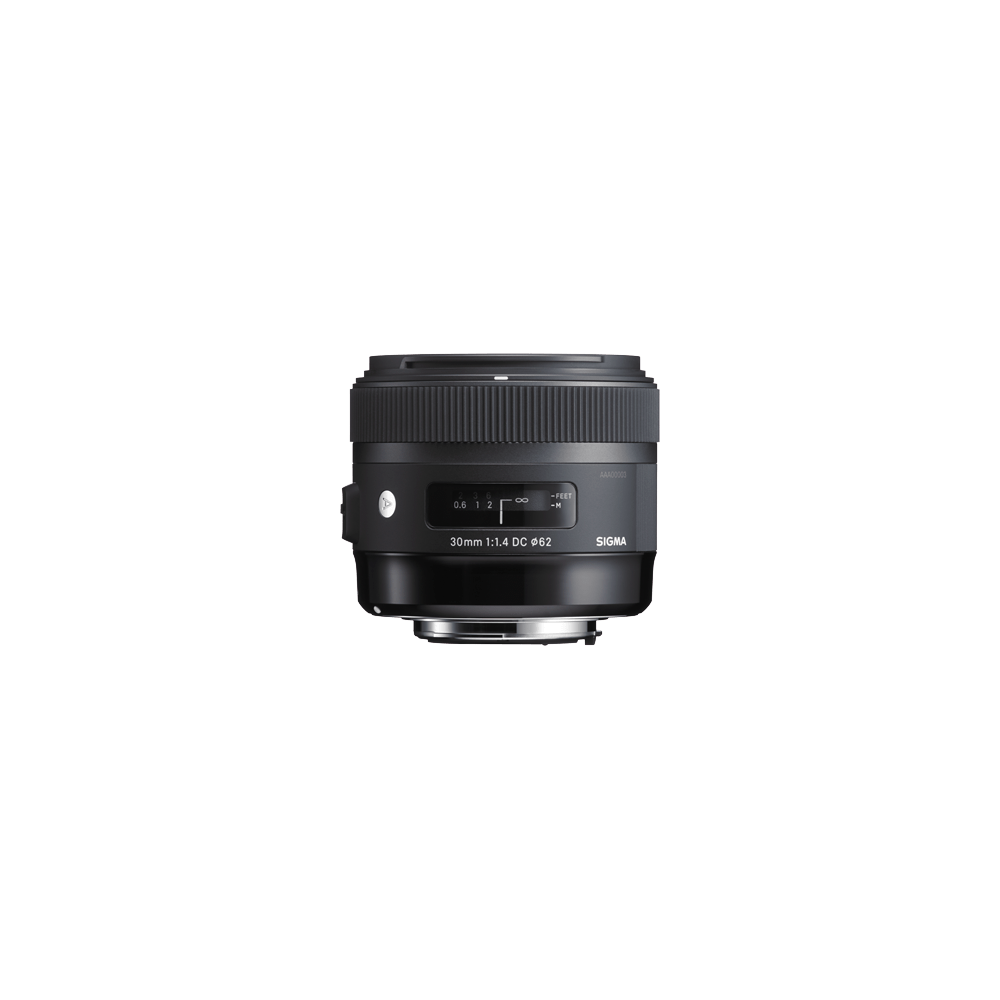
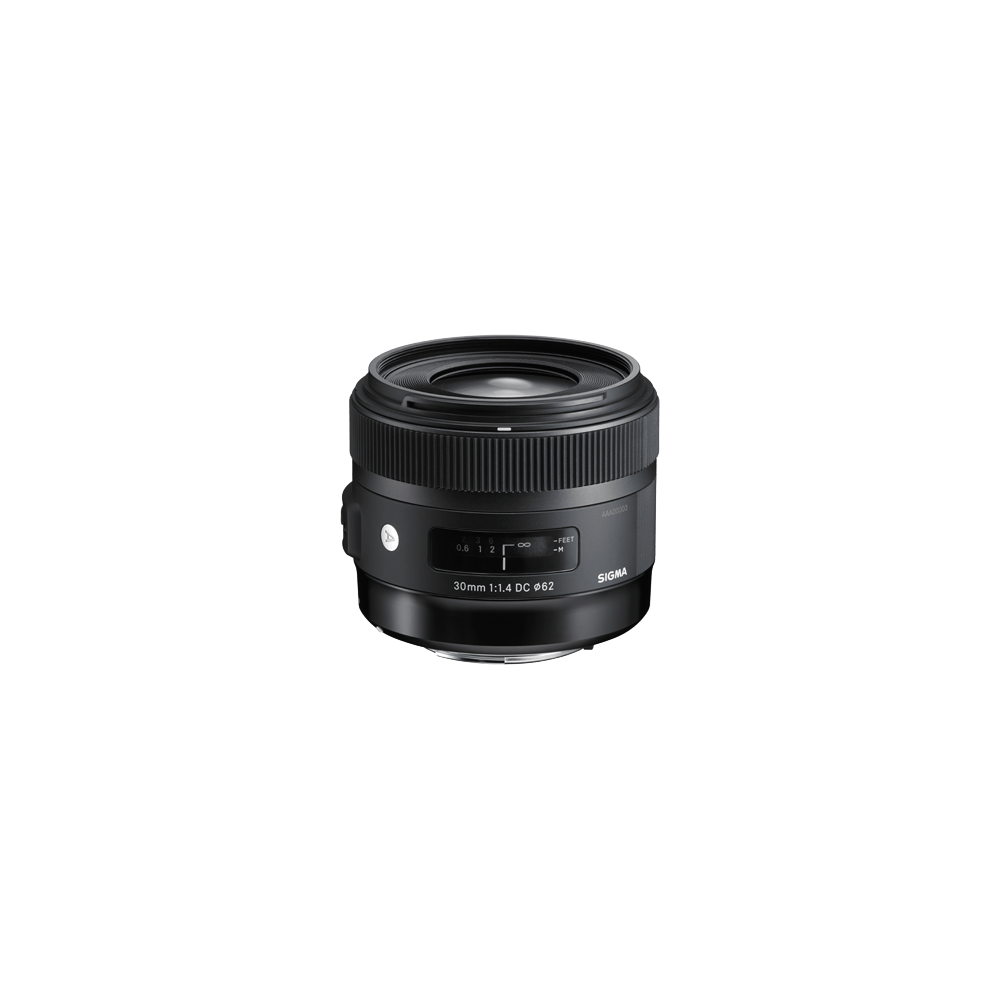



Art
30mm F1.4 DC HSM
Available mounts
- Sigma SA-mount
- Canon EF mount
- Nikon F mount
- Sony A-mount
- Pentax mount
-
Camera Type
DSLR
-
Corresponding Mount
SIGMA SA-mount, Canon EF mount, Nikon F mount, Sony A-mount, Pentax mount
-
Sensor Format
APS-C [DC]
-
Lens Construction
9 elements in 8 groups
-
Angle of View
50.7°
-
Number of Diaphragm Blades
9 (Rounded diaphragm)
-
Minimum Aperture
F16
-
Minimum Focusing Distance
30cm / 11.8in.
-
Maximum Magnification Ratio
1:6.8
-
Filter Size
φ62mm
-
Dimensions (Diameter × Length)
φ74.2mm × 63.3mm / φ2.9in. × 2.5in.
*The length of a lens is measured from the filter surface to its mount.
-
Weight
435g / 15.3oz.
-
Edition Number
A013
The three-digit code on the surface of the lens is to indicate the year the lens was first released.
(Since it is different from the year of manufacture, the release year and edition number may not match depending on the mount.) -
Supplied Accessories
・Case
・LENS HOOD LH686-01
・FRONT CAP LCF-62mm III
・REAR CAP LCR II -
Mount / Product Barcode
SIGMA SA-mount:00-85126-30156-9 (discontinued)
Nikon F mount:00-85126-30155-2
Canon EF mount:00-85126-30154-5
Pentax mount:00-85126-30161-3 (discontinued)
Sony A-mount:00-85126-30162-0 (discontinued)
-
Camera Compatibility
LINK
-
A large-aperture F1.4 standard lens to please any photographer
A large-aperture lens with minimal optic aberration and superb peripheral resolution.
In 2005, Sigma introduced the Sigma 30mm F1.4 EX DC HSM large-aperture APS-C format standard lens. Having reorganized its lenses into three product lines, Sigma created the 30mm F1.4 DC HSM large-aperture APS-C format standard digital SLR camera lens for the Art line. Like other Art lenses, it offers exceptional optical performance throughout the image. Highly versatile, it lets the photographer use distance from the subject and aperture to achieve many different styles of photographic expression. For example, the photographer can leverage the shallow depth of field that creates beautiful bokeh for snap shots, portraits, and landscapes, and many different styles of photography.
-
Lens construction
Putting a large-aperture aspheric lens first in the series of lenses makes possible a slim barrel, while optimized power distribution helps correct various types of optical aberration. These features give this F1.4 large-aperture lens truly optimal image quality.

-
High resolution and outstanding photographic expression
Minimal aberration combined with beautiful bokeh effects at large-aperture settings.
Thanks to their easy-to-use angle of view, standard lenses allow photographers to express themselves fully. The 30mm F1.4 DC HSM leverages superior optical performance to offer outstanding expressive power at a wide range of focusing distances. Optimized power distribution minimizes curvature of field, thereby preventing a loss of image quality at the edges of photographs. The use of a double aspheric lens minimizes spherical distortion, astigmatism and coma. Coma of point light sources is minimized near the edge of the image, and an attractive round bokeh effect is produced at large-aperture settings.

-
Rounded diaphragm
When photographing with point light sources such as electric lights or reflections on a body of water in the background, the rounded 9-blade diaphragm helps produce an attractive bokeh effect—even at large-aperture settings.
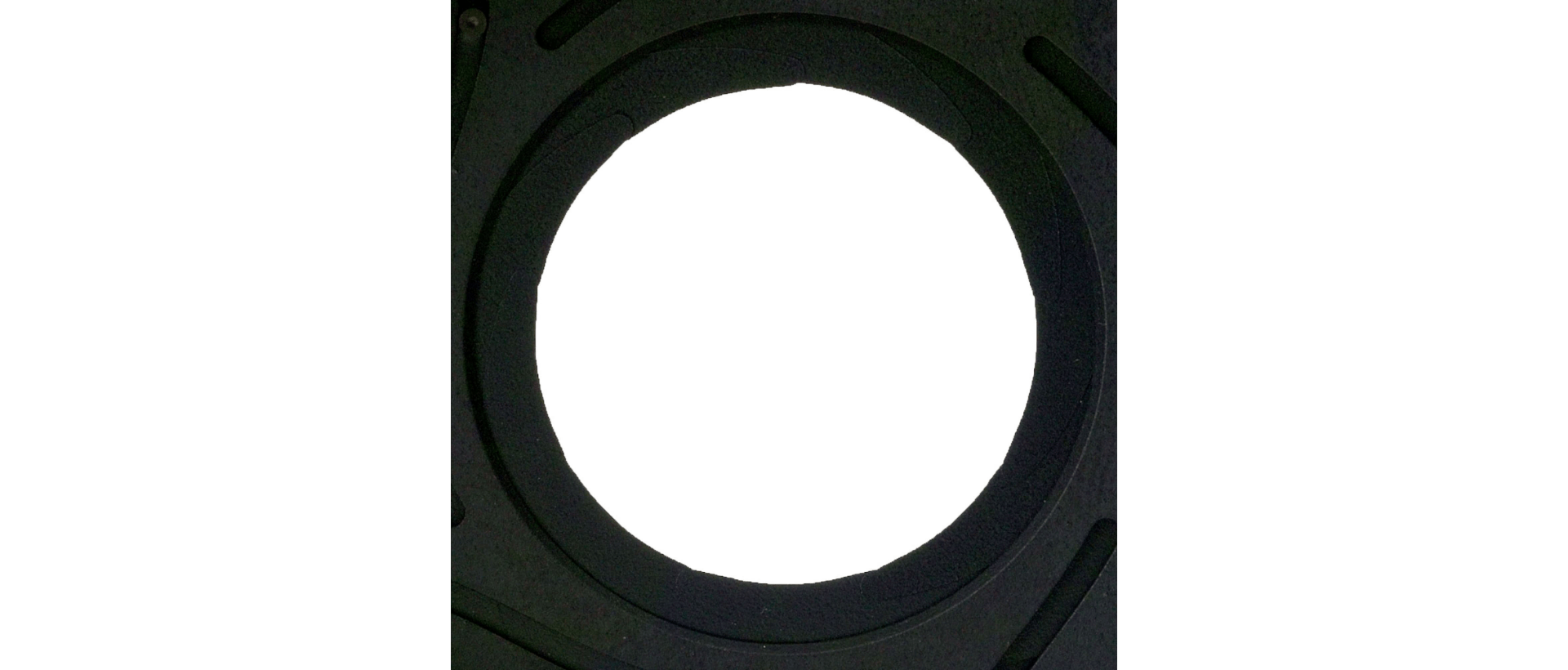
-
The finest in materials, usability and functionality
A refined, integrated design made with the photographer in mind.
All lenses in Sigma’s new Art line come with a hood with a high-quality rubberized connector and feature a newly designed lens cap and AF/MF switch, and are designed for intuitive use and superior functionality. Inside, HSM (hypersonic motor) delivers high AF speed and extremely quiet performance. An enhanced algorithm offers even smoother automatic focusing. Full-time manual focus override is another key feature that leaves the artistic touches in the photographer’s hands. The brass mount combines high precision with rugged construction. Its treated surfaces and enhanced strength contribute to the exceptional durability of the lens. In both the external and internal parts, the optimized use of
(*)TSC (Thermally Stable Composite), an excellent match for metal parts, further contributes to the high-precision construction of the lens.(*)TSC (Thermally Stable Composite)
TSC (Thermally Stable Composite) is a type of polycarbonate with a thermal expansion rate similar to that of aluminum. It has high affinity to metal parts which contributes to high quality product manufacturing.
-
HSM (hypersonic motor)
HSM (hypersonic motor) delivers high AF speed and extremely quiet performance. An optimized algorithm offers even smoother automatic focusing, and full-time manual focus override is another key feature.
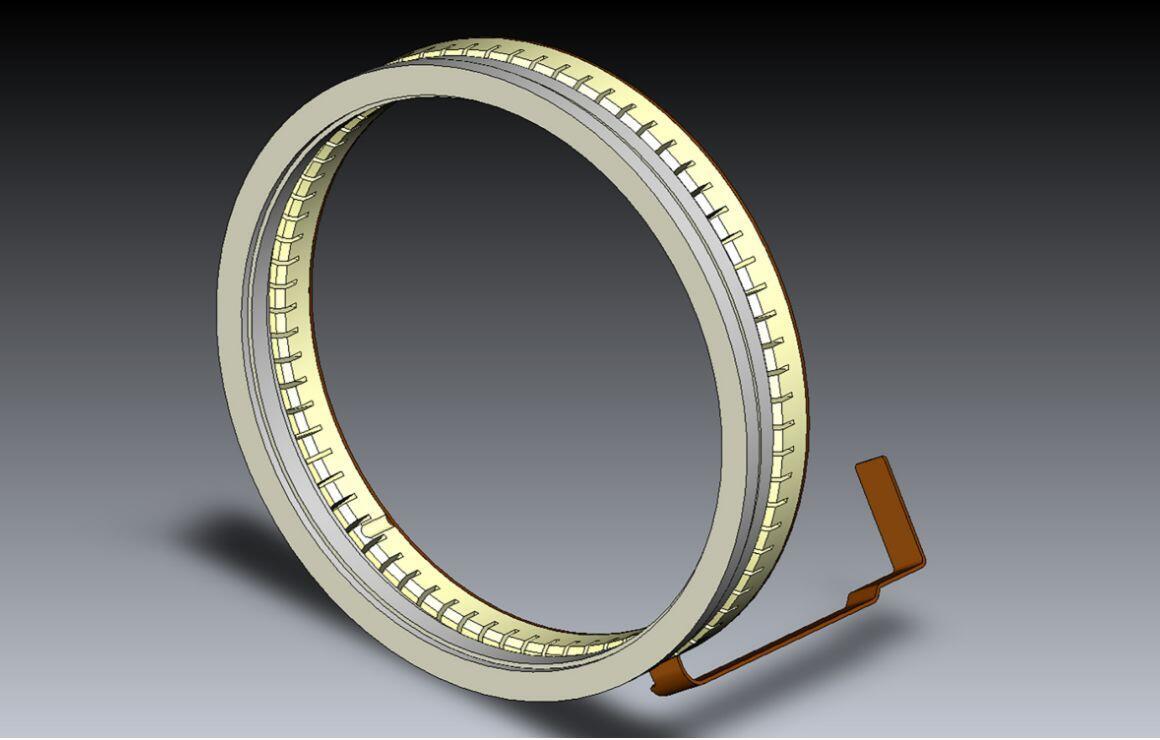
-
Incorporating a Rear Focus system
The lens incorporates a rear focus system that prevents focus-dependent variation in aberration, making high-level image quality possible throughout the entire image. With their unchanging barrel length, these lenses also enhance balance and stability for the photographer. Furthermore, since the front of the lens does not rotate, polarizing filters can be used with extra convenience.

-
TSC (Thermally Stable Composite)
A first for the industry, the barrel of the lens features a new TSC (Thermally Stable Composite) that offers minimal thermal shrinkage combined with exceptional hardness. It also offers 25% greater elasticity than polycarbonate. Since its thermal shrinkage is low, TSC matches well with metal parts, further contributing to the high-precision construction of the lens. TSC also makes possible slimmer forms for parts like zoom rings and scaling rings.
-
Flare and ghosting reduction
From an early stage in the lens design process, flare and ghosting have been measured to establish an optical design resistant to strong incident light sources such as backlighting. Sigma’s Super Multi-Layer Coating reduces flare and ghosting to help photographers produce sharp and high contrast images even in backlit conditions. The included lens hood can be attached to block out extraneous light, which can have a negative effect on rendering performance.
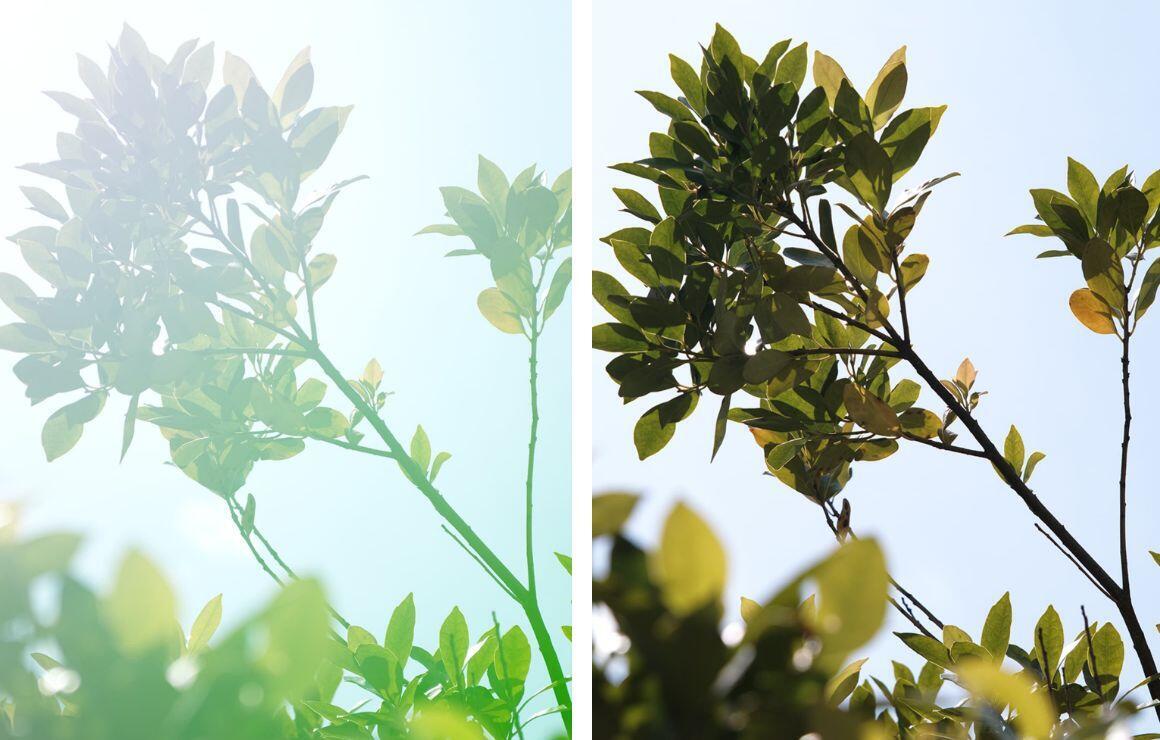
-
High-precision, rugged brass bayonet mount
The brass mount combines high precision with rugged construction. Its treated surfaces and enhanced strength contribute to the exceptional durability of the lens.
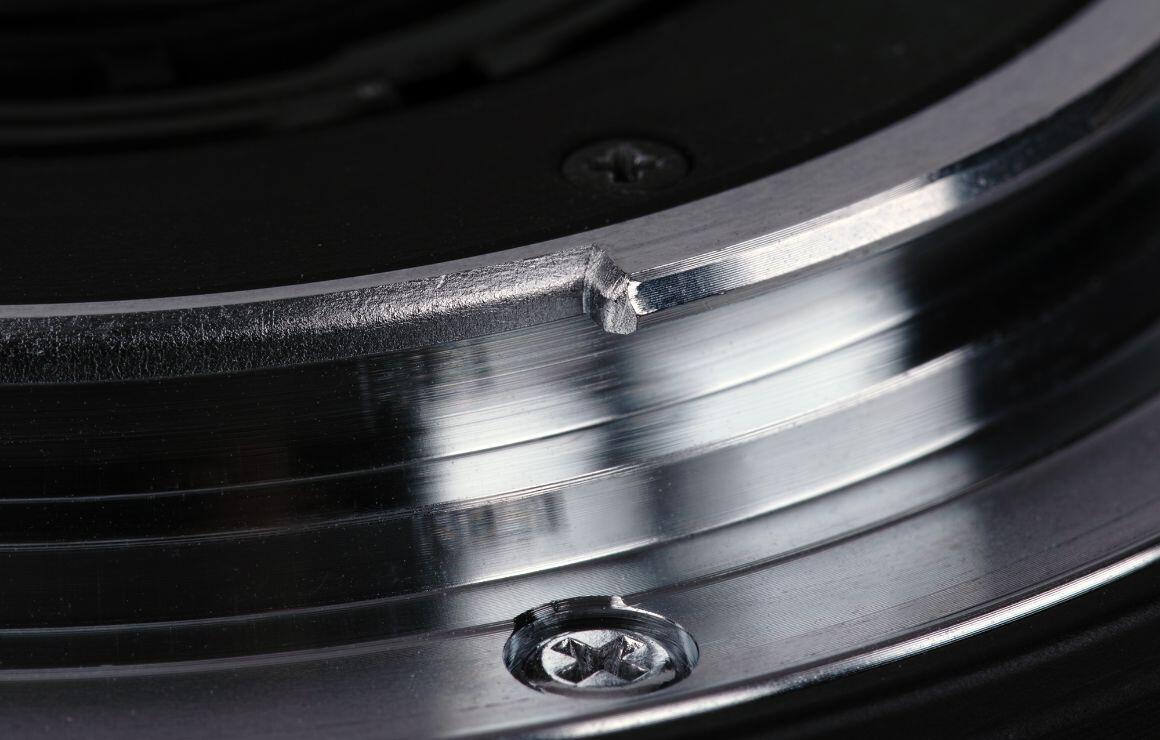
Lens construction
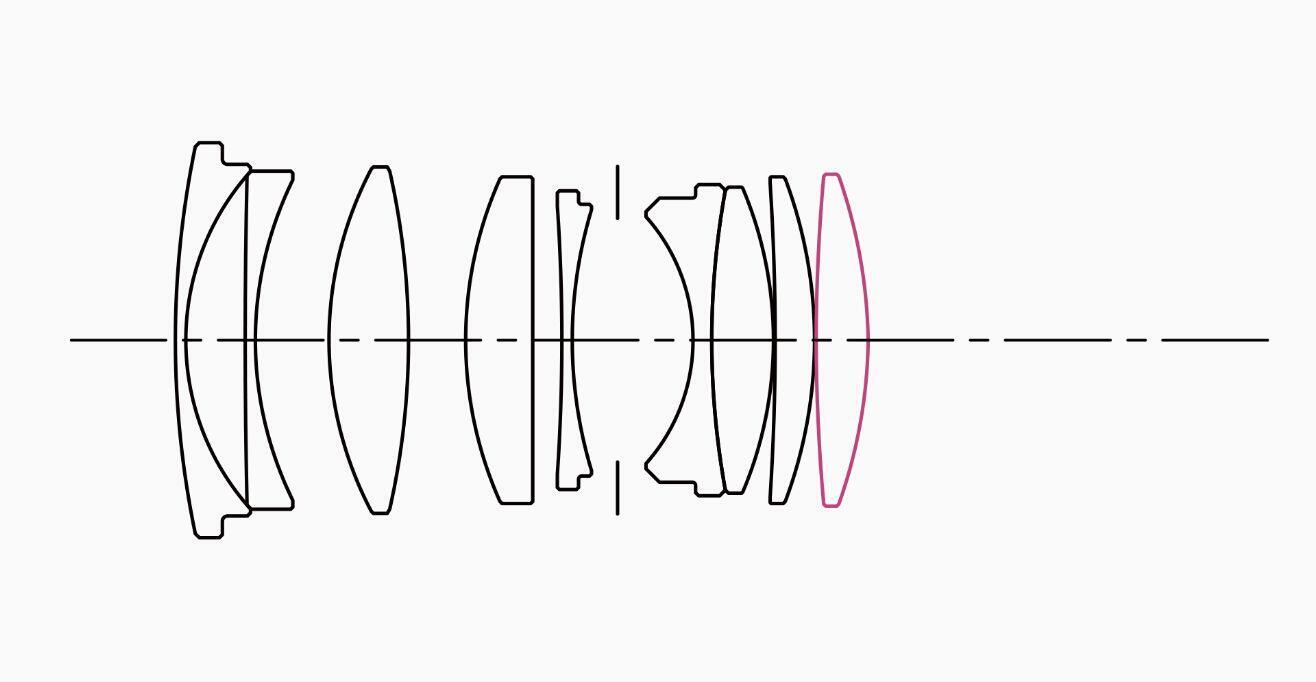
Aspherical lens
MTF Chart
The MTF (Modulation Transfer Function) is one of the measurements for evaluating a lens’ performance, and it shows how faithfully the contrast of the subject can be reproduced on the image plane. The horizontal axis shows the image height (distance from the center of the image in mm) and the vertical axis shows the contrast value (maximum value is 1).
The closer the 10 line pairs/mm curve is to 1, the higher the contrast and clarity of the lens is, and similarly, the closer the 30 line pairs/mm curve is to 1, the better the resolution and sharpness of the lens is.
*The MTF chart depicts the result at the wide-open aperture.
*For mirrorless lenses that support distortion correction, the horizontal axis shows the image height equivalent to when an L-Mount lens is attached to a Sigma L-Mount camera with distortion correction applied. (The effect of distortion correction may differ depending on the mount and camera used.)
*The spatial frequency indicates the variation on the image plane before distortion correction is performed.
-
Spatial frequency
S:Sagittal Line
M:Meridional Line
-
10lp/mm
-
30lp/mm
Diffraction MTF
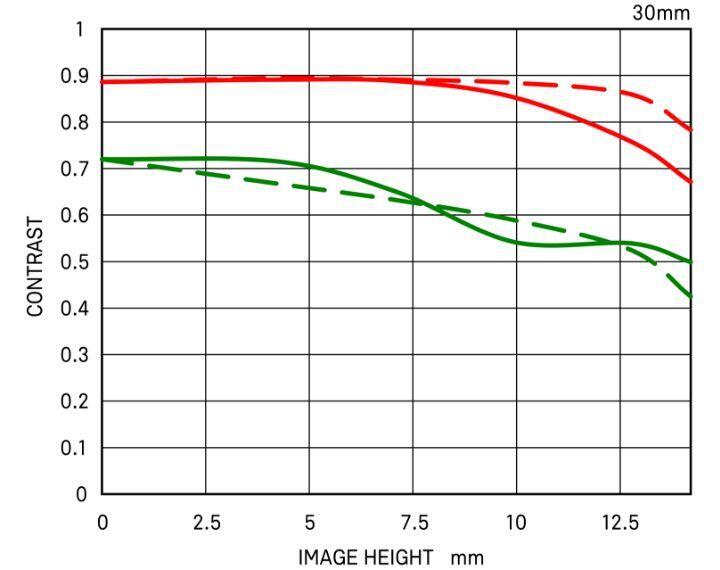
Distortion
effective distortion
When you take a picture of a lattice pattern, it will appear as the blue dotted line shows. The red line illustrates how the lattice pattern will appear in the actual picture when any lens distortion is taken into account.
relative distortion
In this chart, the horizontal axis shows the ideal image height (the distance from the center to the edge of the image [mm]). The vertical axis shows the extent of distortion. The extent of distortion is represented by how much Y, which is the actual image height, grows (or shrinks) against Y0 which is the ideal image height.
When you take the picture of a square object, if the distortion amount shows a minus value, the image will be seen as expanded (Barrel distortion). If the distortion amount is a plus value, it will be seen as a recessed (Pincushion distortion). When the distortion value is close to 0, the appearance of distortion is very minimal.
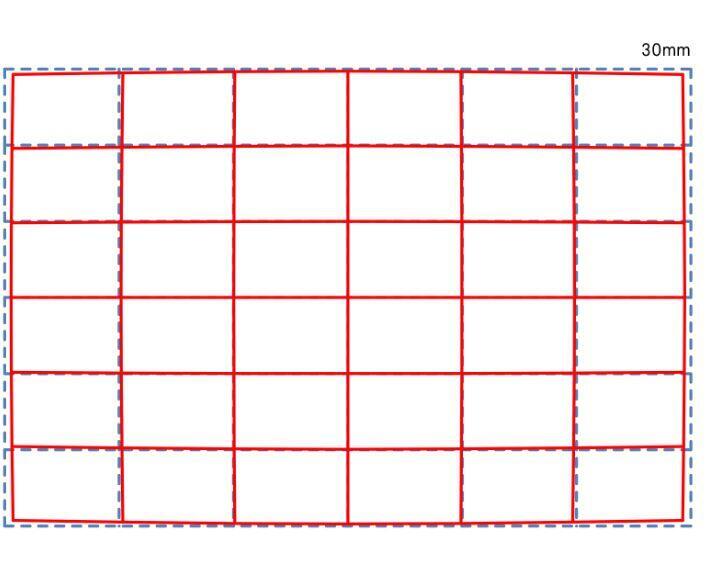
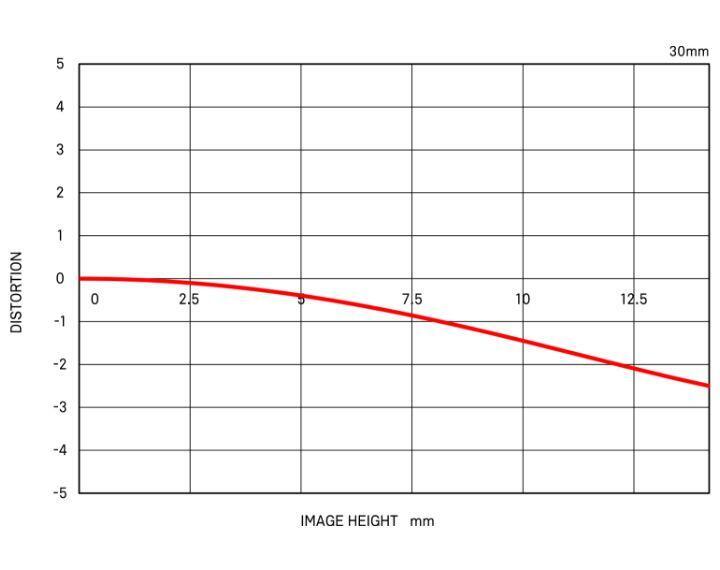
Vignetting
The horizontal axis shows the image height (the distance from the center to the edge of the image [mm]).The vertical axis shows the amount of light in the image (based on the amount of light in the image center being 100%). If the peripheral amount of light is lower than the center, the four corners of image will be darker (vignetting).
-
F1.4
-
F2.8
-
F5.6
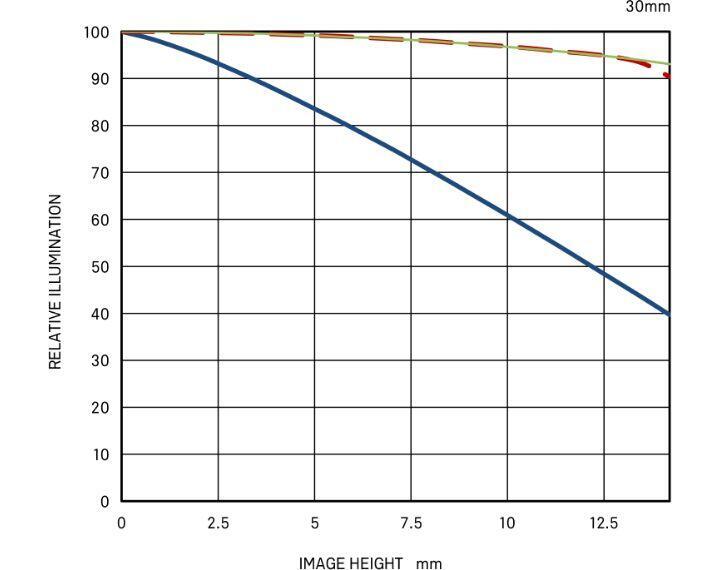

| Camera | SIGMA SD1 |
|---|---|
| Shutter Speed | 1/6000s |
| Lens F Number | F2.0 |
| ISO | 100 |
| Focal Length | 35mm |
|
Focal length
(35mm equivalent) |
45mm |
| Photographer | Koichi Mitsui |
A best-seller made even better.
This large-aperture standard digital SLR camera lens
is in APS-C format, making it ideal
for many different types of photographic expression.
Offering the highest level of image quality,
this large-aperture F1.4 standard lens stimulates the desire to create.
Sigma pioneered the large-aperture APS-C format standard lens category with its famous 30mm F1.4 lens. Now that we have reorganized all our lenses into three product lines, we are proud to introduce the fully updated 30mm F1.4 DC HSM, which offers an angle of view equivalent to 45mm on a 35mm camera. Offering an angle of view and sense of perspective extremely close to that of human vision, this lens stimulates the desire to create and is ideal for many different types of photographic expression. It is a superb go-to lens for artistic photography. Featuring an advanced design and the latest manufacturing technologies, this lens delivers the highest level of image quality.